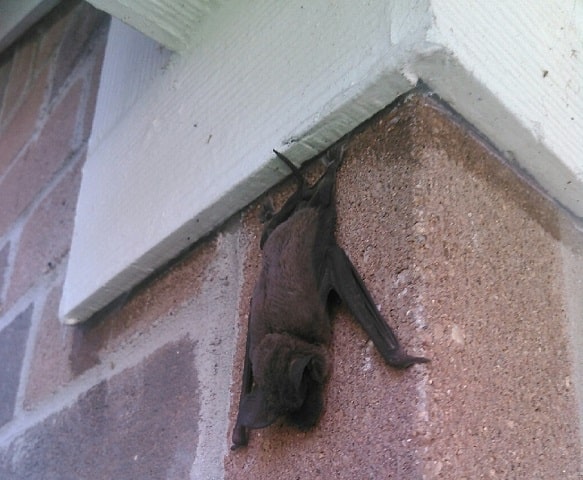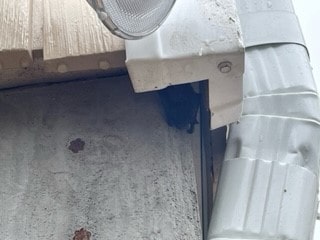Georgia is home to sixteen bat species, and they can live in every region of the state. A suitable bat habitat has close acccess to water, ample food supply, and a safe place to roost during the day. Natural roosting locations include caves and hollowed trees.
Suburban and agricultural landscapes provide similar habitat requirements. Bats will roost in mines, under bridges, in bards, in your attic, inside the walls, or on your roof. Of the sixteen bat species in Georgia, only three bats typically roost in homes. If you have bats in it is likely the little brown bat, big brown bat, or Brazilian free-tailed bat.
Who should call for bat removal in Atlanta, Georgia?
You should call a licensed Nuisance Wildlife Control Operator in Atlanta because bats must be removed from structures through a process of exclusion, not extermination. As per our state laws, intentionally capturing, killing, and harming bats are illegal. This restriction applies to all 16 bat species found in Georgia.
Why are Bats Protected in Georgia?
Out of the 16 local bat species, five are tagged as species of concern within the state. The Indiana bat and the gray bat, meanwhile, on the list of federal and state endangered species.
Bat species currently listed as endangered on the federal level include the Indiana, hoary hat, gray, Florida bonneted, and little Mariana bats. In addition, the Mexican long-nosed, Pacific sheath-tailed, Virginia big-eared, and Ozark big-eared bats are listed for protection.
The federal threatened list includes the Mariana fruit bat and the Northern long-eared bats, while the tri-colored and little brown bats are under review for being endangered.
Benefits of Bats in Georgia
All bats in Georgia are insectivores (no vampire bats). Some small bats can consume up to 1000 small insects in a single hour. A nursing female bat can consume more than 4000 insects a night. It is estimated bats save U.S. farmers roughly $23 billion each year by reducing crop damage and limiting the need for pesticides.
Bat Populations in Georgia Threatened
Despite the benefits bats provide, the bat populations are threatened.
- White-nose syndrome is a fungal disease that spreads through bat colonies and has almost eliminated the Northern long-eared, little brown, and tri-colored bats.
- Bats do not reproduce as quickly as other wildlife. The females typically give birth to one or two pups a year. Slow reproduction puts the species at risk for population decline.
- Pesticides used by farmers reduce the number of bugs available for bats to eat.
- Wind turbines kill hundreds of thousands of migrating bats around the world.
Roosting Bat Concerns in Atlanta
Bats provide tremendous value; however, you do not want bats roosting in your house. Bats pose very little direct danger to people, but they can spread diseases and damage your property.
Bats defecate where they roost. Bat droppings, or guano, can accumulate within walls and attics as well as on the ground and roof tiles. The nutrient-rich droppings cultivate the growth of histoplasmosis fungus, which causes severe respiratory problems in humans.
Bats are indeed capable of contracting and transmitting the rabies virus. Rabies is transmitted via scratch, bite, or when infected saliva comes into contact with human eyes, mouths, or open wounds. So if you find bats in your house, avoid contact!
Bats also harbor ticks and fleas. Those parasites can find new hosts like your family and pets.
Bat Removal in Atlanta, Georgia
To get rid of bats in Georiga, you need to use exclusion not exterminator. In the state of Georgia, not only is it illegal to kill or trap bats, but also you should avoid evict bats from your home if flightless pups are present.
Bat Exclusions Restrictions in Georiga
Bat issues can happen to any home at any time of the year, but they are most common during maternity season. Bat maternity season in Atlanta, GA lasts from April 1st–July 31st. During this time, you should avoid bat removal. During this time of year, bat pups are too young to fly and may become trapped and die inside structures. If exclusions must be completed during this maternity period they must be completed by a licensed Nuisance Wildlife Control Operator like Critter Control.
Spring is ideal for bat removal as it coincides with their return from hibernation or migration but before maternity season starts. After maternity season, the bat colony disperses. Some bats return to the same roost year after year. If you want to prevent bats from entering your home, preventative exclusion is the best precaution you can take.
How to Get Rid of Bats
The most effective and humane way to remove bats is by utilizing a bat valve with a full home exclusion. Exclusion, not bat exterminator. A bat valve allows for bats to exit your home but not re-enter. Since each bat removal is unique, our specialist will use or create a bat valve specifically for your home.
Once the bat valve is installed, all other entry points will be sealed, allowing bats to exit only through the valve. The removal process typically takes 3-7 days. Our specialist will perform a final attic inspection before removing the valve. After removing the valve, the final entry point will be sealed, leaving your home bat-free.

.jpg)
.jpg)
Pictures of Bats in the Attic
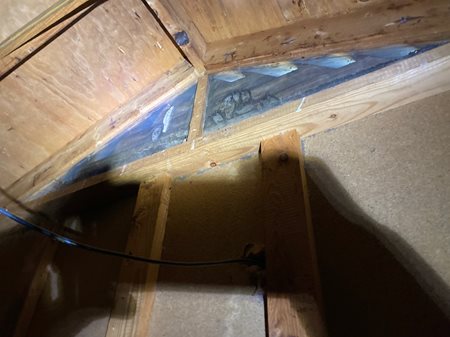
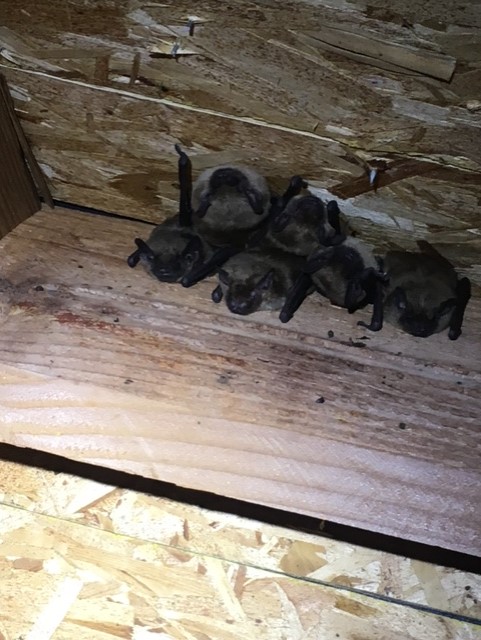
Bat Guano Identification – Signs of Bats in Attic
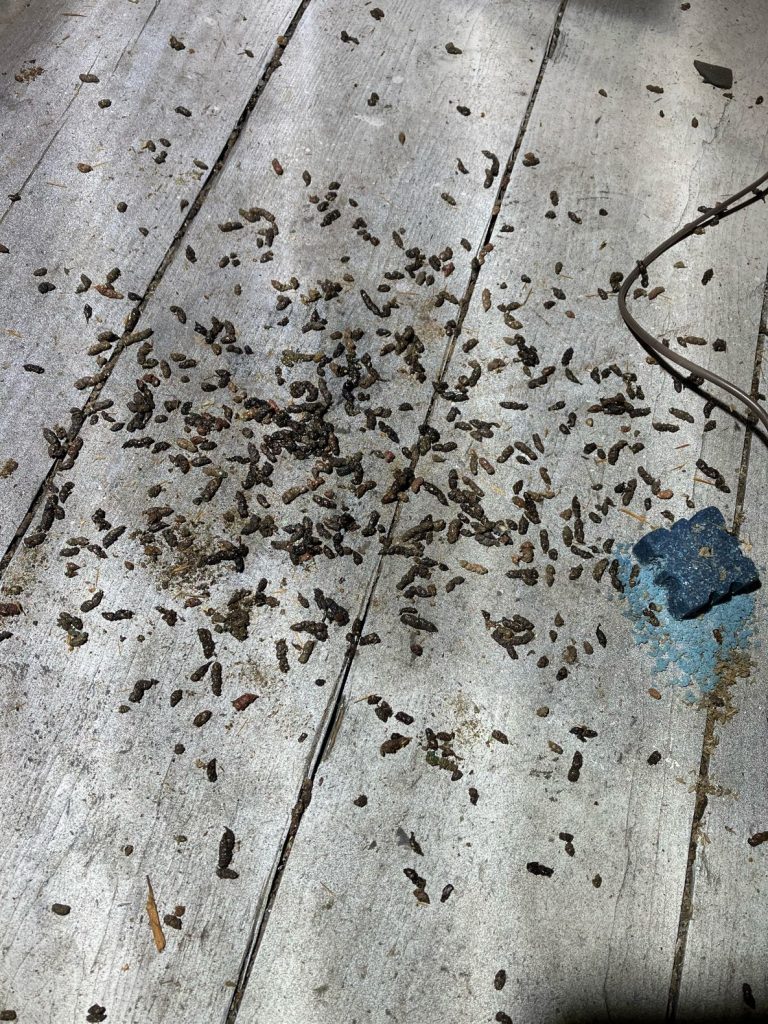
How Bats Get into Your House
